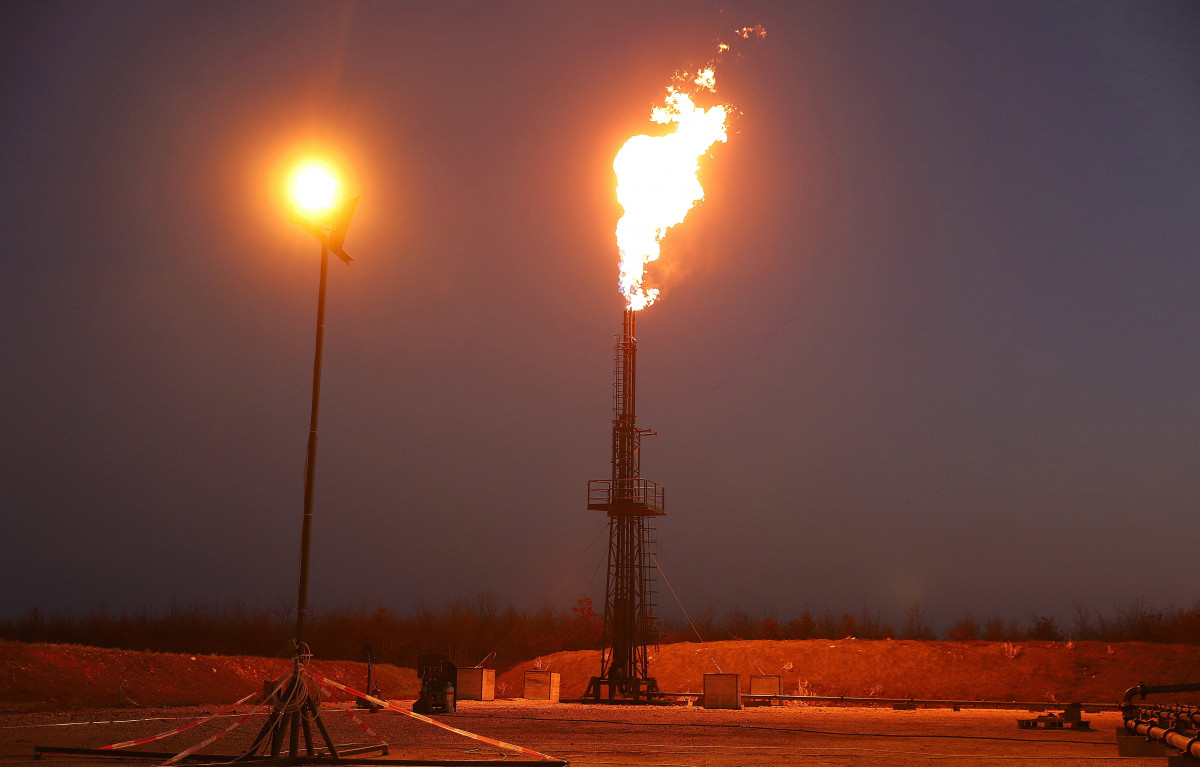Mol carried out three successful shallow gas drillings in Eastern Hungary in the last two months, two in the Komádi area and one in Álmosd; the three new wells can meet the gas needs of up to 20,000 average family homes for several years.
The announcement recalls that the shallow gas program was launched in 2019, with new technology targeting typically small fields closer to the surface of the earth. In recent years, 16 out of 18 drillings have been successful, and shallow gas currently accounts for approximately 5 percent of the company’s annual gas production of 1.4 billion cubic meters in Hungary.
The new findings were made possible by a special evaluation of modern seismic measurements, which help researchers get a more accurate picture of where there is a high probability of gas in the depths of the earth. The gas fields targeted by drilling are located at a shallower than usual depth, usually around 1,500-2,000 meters, hence the name of the program, they explained.
The gas pipeline infrastructure in Hungary allows the plants found to be put into production in a very short time, on average 5-6 months. The shallow gas wells put into production so far can supply the natural gas needs of approximately 30,000-40,000 average-family homes, this number will soon reach 50,000 with the new wells put into production, Mol announced.
The three new wells can contribute up to 750 barrels per day to maintaining Mol’s Hungarian gas and oil production of around 32,000 barrels per day, which means approximately 44 million cubic meters of gas per year. The exploration and production director of Mol Hungary explained in the announcement that the shallow gas wells in Eastern Hungary contribute greatly to the fact that they can compensate for the natural decrease in the production of fields that are being exhausted.
Ádám Homonnay added that one of the biggest opportunities in the program is that compared to other research projects, it can contribute to mitigating the decline in domestic hydrocarbon production with low risk, good planning and good reliability.
György Bacsa, the managing director of Mol Hungary, reminded of the research success announced a few months ago in Vecsés, and emphasized that the crude oil found on the border of Vecsés and the successful shallow gas drilling in eastern Hungary also indicate that Mol can show results in the development of domestic exploration and production even in the short term.
According to the company’s information, Mol is the largest producer of natural gas in Hungary, accounting for 90 percent of domestic production with 1.4 billion cubic meters last year.
According to the plans, about HUF 200 billion will be invested in the oil and natural gas mining industry in Hungary over the next five years. Almost 60-65 percent of this is for natural gas, 20-25 percent for crude oil, and the rest is aimed at the safe maintenance and replacement of the infrastructure.
In the work of the research and production division, the intensification of the production of the existing fields and the shallow gas research program are particularly successful. Without them, domestic production would have dropped to less than half of its current level in the past five years, Mol said.
MTI


















